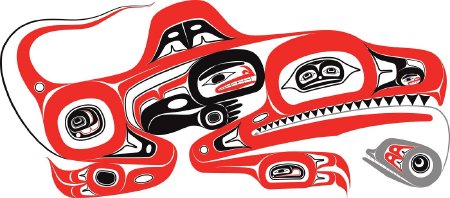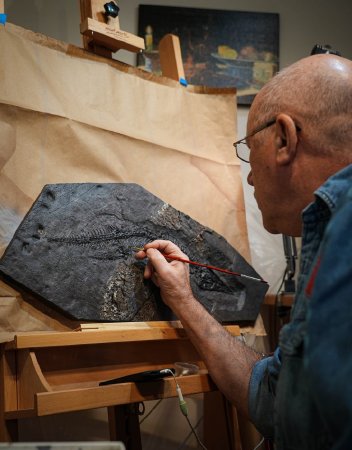Description:
Gunakadeit Arrives in Ketchikan
In 2011, the fossilized skeleton of an extinct marine reptile with an unusually pointed snout was found near Kake, Alaska. The five-foot long sea creature was identified as a possible juvenile thalattosaur (Greek for "sea lizard"). Experts believe thalattosaurs lived in the shallow coastal waters of a string of islands in the Pacific Ocean during the late Triassic period 215 million years ago. According to Dr. Pat Druckenmiller, director of the University of Alaska Museum of the North and participant on the dig, the fossil is the "most beautiful, complete vertebrate skeleton ever found in Alaska." Although thalattosaurs were uniquely adapted to living a marine lifestyle, they mysteriously died out 200 million years ago.
The one-of-a-kind fossil was reminiscent of a mythological sea monster named Gunakadeit, who is featured in Tlingit oral tradition. In these stories, Gunakadeit lived in the ocean and was known to bring good fortune to those who saw it. On the recommendation of Sealaska Heritage Institute's Council of Tribal Scholars along with the approval of Tlingit Elders from Kake and elsewhere, the animal was given an Indigenous genus name, Gunakadeit joseeae. The species name commemorates the name of one of the team members' mother, Josée. In 2020, Tlingit artist Robert Mills from the Tsaagweidí clan of Kake, created a formline rendition of Gunakadeit.
A cast of the Gunakadeit fossil painted by local artist Terry Pyles and a version of Robert Mills' design is on display at the Tongass Historical Museum in the special exhibit, "Cruisin' the Fossil Coastline."
Object ID #: KM 2022.2.77.1


